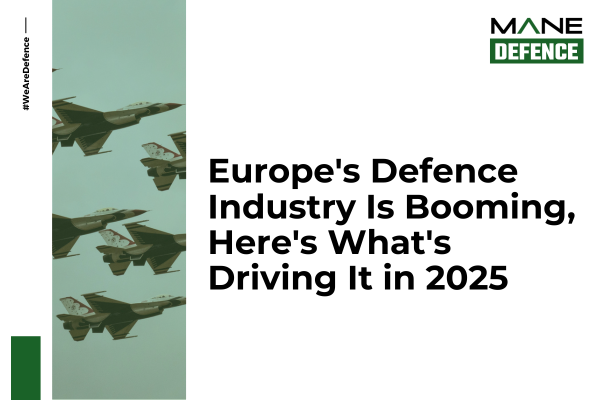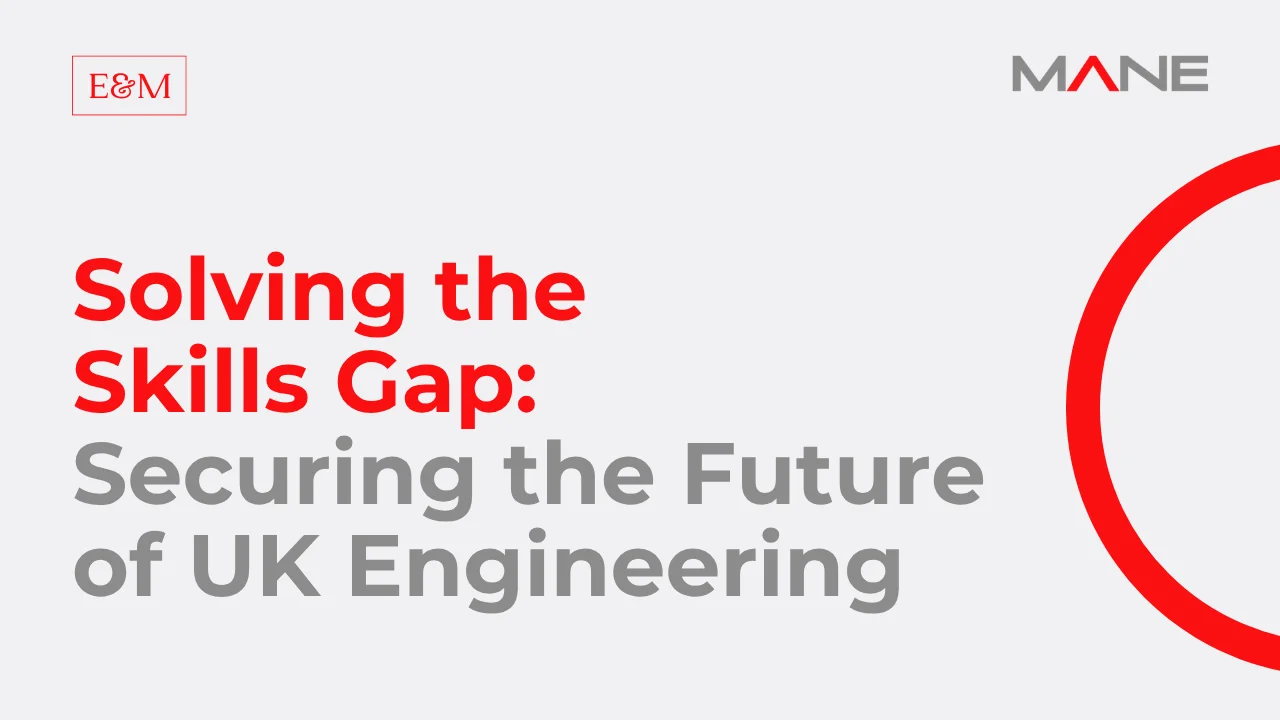Europe's Defence Industry Is Booming, Here's What's Driving It in 2025
21 May, 20254 minsIf you've been keeping an eye on global security, one thing is clear: Europe's NATO ...

If you've been keeping an eye on global security, one thing is clear: Europe's NATO allies are taking defence seriously again, and in a big way.
After years of underinvestment, many countries are now pouring money into their military budgets, restarting production lines, and teaming up on next-generation tech. The result? A massive growth spurt in the European defence industry, reshaping the way NATO thinks and operates.
Let's break down what's happening and why it matters.
Big spending
The numbers don't lie. Defence budgets across Europe are reaching record levels in 2025.
Germany has gone all in, committing over £61 billion (€72 billion) this year to military upgrades, infrastructure, and new tech. It's now the biggest defence spender in Europe after the UK.
Poland has taken things even further, with defence spending now above 4% of its GDP. It's loaded up on tanks, rocket systems, and missile defence to shore up NATO's eastern front.
France is maintaining its strong posture, especially with its nuclear forces and overseas missions. Its defence budget has climbed to £46.75 billion (€55 billion), up from £36.55 billion (€43 billion) just a few years ago.
And of course, the UK remains a key player. It's spending £63 billion this year, with major investments in submarines, cyber warfare, and partnerships like AUKUS with the US and Australia.
Altogether, 18 European NATO countries are now hitting the 2% GDP spending target. That's double the number from just a few years ago.
Is NATO collaborating to its fullest?
It's not just about spending more. European NATO countries are also working together more closely than ever before.
The European Sky Shield Initiative (ESSI)
Germany is leading a 24-country project to build a shared missile defence network. It's bringing together top-tier systems like:
- IRIS-T (short range),
- Patriot missiles (medium range), and
- Arrow 3 from Israel (long-range, anti-ballistic).
The first Arrow 3 sites are already being built in Poland and Romania.
DIANA
Launched in 2023, the Defence Innovation Accelerator for the North Atlantic (DIANA) is helping NATO keep pace with new tech in 2025:
- 44 European start-ups got grants of £85,000 (€100,000) to work on cool stuff like drones, quantum sensors, energy-harvesting clothing, and battlefield AI.
It's like a military version of Dragons' Den, just with fewer suits and more lasers.
Production on a large scale
To keep up with demand (and help Ukraine), NATO launched a joint production plan for things like:
- 155mm artillery shells,
- mobile air defences, and
- radar systems.
Countries like France, UK, Norway and Czechia are leading the way here, cranking out equipment fast.
Rebuilding the military
European countries are also bringing defence manufacturing back home. This isn't just about national pride, it's about speed, security, and supply chains that don't rely on rivals.
Spain, Italy and the UK are building ships and submarines for NATO patrols in the Mediterranean.
The UK and Italy along with their non-NATO partner Japan, are working on the Tempest fighter jet, a futuristic, sixth-generation aircraft packed with AI and stealth features.
Romania signed a £2.13 billion (€2.5 billion) deal with Germany to build Leopard 2 tanks locally.
Lithuania followed with a £807.5 million (€950 million) tank contract of its own, its biggest purchase since independence.
Even smaller countries like the Czech Republic are opening new maintenance hubs to support NATO operations in the east.
Tech is the new ammo
The Ukraine war showed that wars aren't just fought with tanks and troops anymore. Now it's about drones, data, and digital warfare and Europe's catching up fast.
Helsing, a German AI defence firm, is making underwater drones that can patrol the Baltic Sea for months without surfacing.
Estonia and the Netherlands are becoming cyber powerhouses, leading NATO exercises in hacking, defence, and digital war games.
France and Germany are putting satellites into orbit to give NATO early-warning and surveillance tools.
Meanwhile, private start-ups like Anduril and Palantir are becoming just as important as traditional weapons companies. They move faster, think digitally, and build for the battlefield of tomorrow.
Why all this now?
Here's the short version: the world feels less safe, and Europe doesn't want to be caught off guard.
With Russia still a threat and the volatility from our North American alliances, European countries are stepping up to protect their own turf.
Tensions in the Middle East and North Africa mean NATO has to stay ready for fast deployments.
And with new arenas like cyberspace and the Arctic becoming more contested, Europe wants a bigger voice and a bigger stick.
Big defence = big business
This defence boom isn't just about security, it's also about jobs and innovation.
The European defence sector now supports over 600,000 jobs and growing.
Exports are booming, especially for the UK, France and Germany, which saw a 30% surge in sales early this year.
Start-ups and SMEs are finally getting their foot in the door thanks to NATO innovation programs like DIANA.
Europe's defence giants are hiring like never before
All this investment and rearmament isn't happening in a vacuum. It's powered by some of Europe's biggest defence companies and they're on a massive hiring spree to keep up with demand.
Who Are the Major Players?
Here are a few of the industry heavyweights leading the charge:
- Airbus Defence and Space (Germany/France/Spain)
Known for fighter jets (like the Eurofighter), drones, satellites, and military transports. Airbus is expanding its defence wing rapidly, especially around surveillance and cyber-tech.
- BAE Systems (UK)
The UK's biggest defence company and one of the largest in Europe. BAE is behind the Tempest jet, Type 26 frigates, and submarine systems. It's also deeply involved in cyber and space.
- Leonardo (Italy)
A major player in helicopters, radar, and avionics. Leonardo is central to both the Tempest project and Europe's missile defence systems.
- Thales (France)
Specialises in secure communications, radar, cybersecurity, and aerospace. A critical supplier for both NATO and EU programmes.
- Rheinmetall (Germany)
This is the tank and ammo giant. Rheinmetall has seen a surge in orders for Leopard tanks, artillery shells, and combat vehicles, especially from Poland, Romania, and the Baltics.
- MBDA (UK, French, German, Spain, Italy)
Europe's top missile maker, co-owned by Airbus, BAE Systems, and Leonardo. They're supplying everything from portable air defence systems to long-range cruise missiles.
- Rolls-Royce (UK)
Known for its cutting-edge aircraft engines, Rolls-Royce is a key supplier to NATO, especially with its Adour engines for training jets and RTM322 engines for military helicopters. The company is also heavily involved in submarine propulsion systems, a critical area as Europe focuses on enhancing naval power.
- Babcock (UK)
A major player in shipbuilding, submarine support, and military engineering. Babcock is involved in designing, building, and maintaining the Royal Navy's submarines and warships, alongside NATO's amphibious assault vessels. They're expanding their workforce to support growing demand from the UK and Europe's maritime defence needs.
To meet the surge in orders and long-term contracts, these companies are scaling up hiring across all departments not just engineering.
BAE Systems announced in March 2025 that it plans to hire over 5,000 new staff this year in the UK alone, across roles in shipbuilding, cyber, AI, and advanced manufacturing.
Rheinmetall is doubling the size of its workforce in Eastern Europe, particularly in Lithuania and Romania, where it's setting up new tank production lines and logistics hubs.
Airbus and Thales are both recruiting heavily in France, Germany, and Spain, especially for software engineers, drone developers, and cybersecurity analysts.
Rolls-Royce is ramping up hiring in the UK to support both its military aircraft and naval contracts. It's particularly focused on engine designers and maintenance engineers for the next-generation jets and submarines under development.
Babcock is expanding its shipbuilding workforce as part of the UK's ongoing naval expansion. They're hiring for naval engineers, shipbuilders, and maintenance experts to support submarine and surface ship projects.
Even smaller defence tech start-ups backed by NATO innovation funds are growing fast, offering roles in AI research, sensor development, quantum computing, and more.
Beyond 2025
Europe's defence industry is going through a serious transformation.
What used to be an underfunded, overlooked sector is now front and centre. Countries are spending more, working smarter, and building together. The tech is cutting-edge, the partnerships are growing, and the mindset has changed.
This isn't just about building bigger armies. It's about being ready, being resilient, and reclaiming control over Europe's future in an increasingly unpredictable world.
And if this pace keeps up, the defence industry could end up shaping not just Europe's security, but its economy and innovation ecosystem for years to come.



